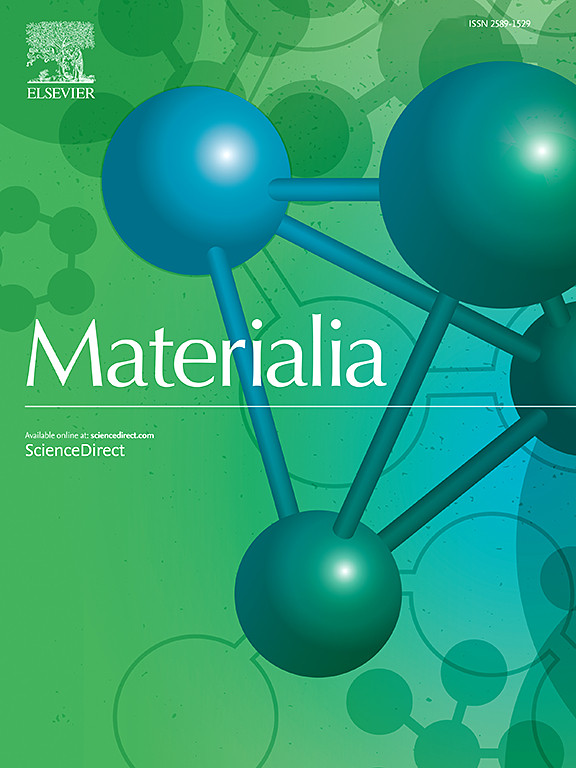新型海藻酸盐-羟基磷灰石复合骨再生低温凝胶
IF 3
Q2 MATERIALS SCIENCE, MULTIDISCIPLINARY
引用次数: 0
摘要
骨组织工程不仅需要支持细胞生长和分化的生物材料,还需要模拟天然骨骼的机械和结构特性。在这项研究中,我们开发了一种新的海藻酸盐-羟基磷灰石(HA)复合低温凝胶,采用一步冷冻工艺,其中海藻酸盐链通过碳二亚胺(EDC)化学共价交联,与HA结合以增强骨导电性。利用傅里叶变换红外光谱(FTIR)、x射线衍射(XRD)、固体核磁共振(13C NMR)、吸水分析、力学测试、扫描电子显微镜(SEM)和微计算机断层扫描(µ-CT)对所得冷冻液进行了表征。体外研究MC3T3-E1前成骨细胞的生物相容性和成骨潜能。该冷藏箱具有高度互联的多孔结构,保持了机械完整性和优异的膨胀性能。结构和化学分析证实HA交联成功,分布均匀。体外细胞相容性研究显示增强细胞活力和碱性磷酸酶(ALP)活性,表明该材料支持成骨分化的能力。这些结果表明,所开发的复合冷冻材料作为骨再生应用的平台具有很大的潜力。本文章由计算机程序翻译,如有差异,请以英文原文为准。
Novel alginate-hydroxyapatite composite cryogel for bone regeneration
Bone tissue engineering requires biomaterials that not only support cell growth and differentiation but also mimic the mechanical and structural properties of native bones. In this study, we developed a novel alginate-hydroxyapatite (HA) composite cryogel using a one-step cryogelation process, where alginate chains were covalently crosslinked via carbodiimide (EDC) chemistry, with HA incorporated to enhance osteoconductivity. The resulting cryogels were characterized using Fourier Transform Infrared Spectroscopy (FTIR), X-ray Diffraction (XRD), Solid-State Nuclear Magnetic Resonance (13C NMR), water uptake analysis, mechanical testing, scanning electron microscopy (SEM), and Micro-Computed Tomography (µ-CT). In vitro studies with MC3T3-E1 pre-osteoblasts were conducted to evaluate biocompatibility and osteogenic potential. The cryogels exhibited a highly interconnected porous architecture, maintaining mechanical integrity and excellent swelling properties. Structural and chemical analyses confirmed successful crosslinking and uniform distribution of HA. In vitro cytocompatibility studies demonstrated enhanced cell viability and alkaline phosphatase (ALP) activity, indicating the material’s ability to support osteogenic differentiation. These results suggest that the developed composite cryogels hold great potential as a platform for bone regeneration applications.
求助全文
通过发布文献求助,成功后即可免费获取论文全文。
去求助
来源期刊

Materialia
MATERIALS SCIENCE, MULTIDISCIPLINARY-
CiteScore
6.40
自引率
2.90%
发文量
345
审稿时长
36 days
期刊介绍:
Materialia is a multidisciplinary journal of materials science and engineering that publishes original peer-reviewed research articles. Articles in Materialia advance the understanding of the relationship between processing, structure, property, and function of materials.
Materialia publishes full-length research articles, review articles, and letters (short communications). In addition to receiving direct submissions, Materialia also accepts transfers from Acta Materialia, Inc. partner journals. Materialia offers authors the choice to publish on an open access model (with author fee), or on a subscription model (with no author fee).
 求助内容:
求助内容: 应助结果提醒方式:
应助结果提醒方式:


